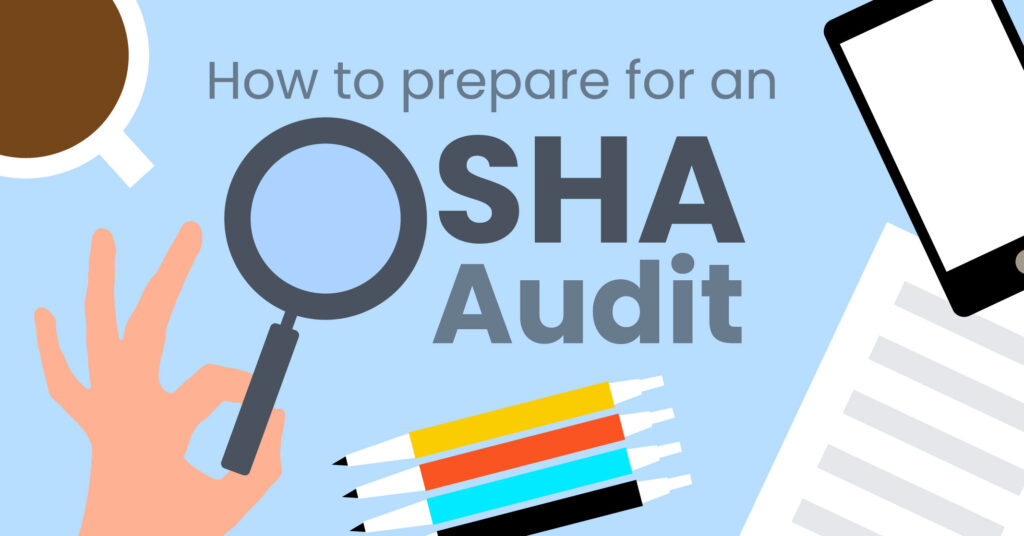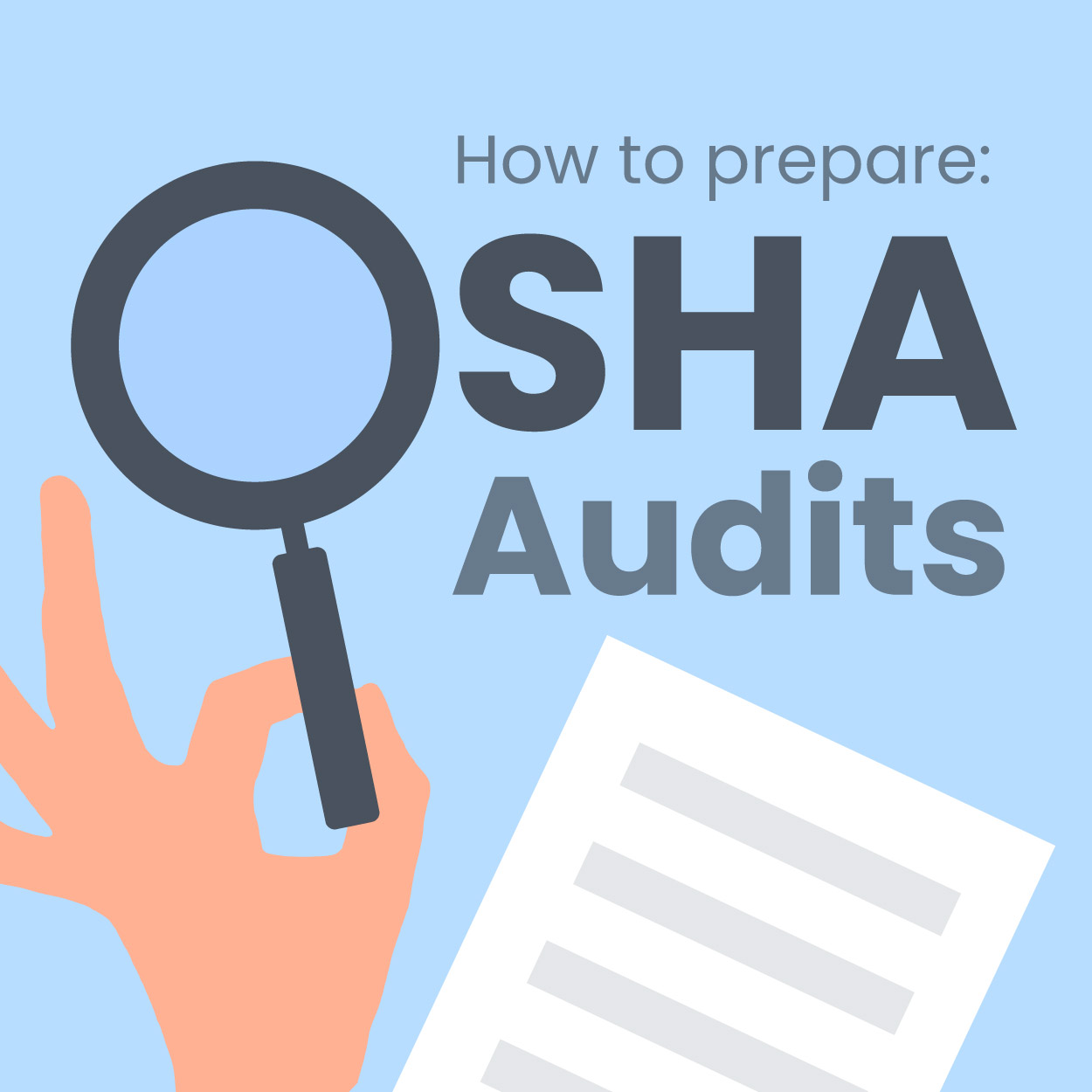
How to Prepare for an OSHA Audit
The Occupational Safety and Health Administration (OSHA) may conduct workspace inspection audits at any time, rarely with advanced warning. Sometimes inspections are scheduled, such as when there’s imminent danger at a worksite. Sometimes, an inspector is in the area and they come by to check in.
Some of the Reasons OSHA Audits Occur Include:
- On-site fatality
- Imminent danger situations and hazards that could cause serious physical harm or death
- Severe worker injuries and illnesses that have been reported
- Worker allegations of violations and hazards, which may be anonymously filed
- Hazard referrals from local, state and federal agencies (like the Environmental Protection Agency), the media, individuals or organizations
- Targeted inspections for high-hazard industries or workplaces
- Follow-up inspections
Whatever the cause, an OSHA audit may catch some businesses off-guard. Everyone at your company should be ready for an audit at any time, including business owners, managers and employees. If your business has recently filed an incident like a fatality or serious injury requiring hospitalization, you should assume an audit is coming.
As with anything in safety, it’s essential to focus on preparation so things go smoothly. Training employees and building an OSHA audit toolkit can help.
OSHA Inspection Training Tips
Before an audit occurs, you should conduct a company-wide training with all employees on what to expect. Do this as quickly as possible after any incident has been recorded. Make sure to host ongoing trainings even if your business has a pristine safety record, since audits can happen any time.
Employer Rights
First, it’s important to know your business rights regarding an OSHA audit. An employer or business owner may choose to check for an inspection warrant before an OSHA audit happens. A business has the right to refuse inspection when the compliance officer doesn’t have a warrant.
Be aware that, according to EHS Today, getting a warrant is straightforward. Asking for one may result in a longer and more detailed inspection if it concerns for the compliance officer.
An OSHA compliance officer is required to provide identification and qualified credentials, with an ID including their photo, name and office. You can call your local OSHA office to confirm a compliance officer’s identity before the audit if you choose.
The officer is required to tell the business why they are on-site, explain what the inspection scope includes and reference any incident that may have led to the audit.
Employer Representation
As an audit proceeds, management and employee representatives may accompany the compliance officer. You may choose to designate your safety manager, operations manager or another high-profile on-site employee as your OSHA spokesperson.
It’s helpful to create a spokesperson chain that includes multiple business safety representatives. That way, you’re covered in case one spokesperson is off-site during the time of an audit or if several OSHA compliance officers come by for multiple inspections at one time.
Employees may also choose their own representatives for OSHA inspections. Sometimes an employee union makes this decision. In other cases, an employee agreed-upon safety committee member may join the audit.
What to Expect During an OSHA Audit
An OSHA auditor can speak with any employee during the audit, so it’s important that everyone is prepared. Explain the types of topics OSHA may discuss. Advise employees to tell the truth, answer questions to the point and not to volunteer additional information.
Your employees should understand what their responsibilities are and what safety processes and procedures are in place. Employees don’t have to go in-depth on answers, but they should be confident and conduct themselves professionally when communicating to a compliance officer. Employees may choose to defer compliance conversations to the business spokesperson.
Your team should take photos of anything the OSHA compliance officer photographs and record detailed notes during the inspection so you have a record of the audit. While OSHA can request certain forms like OSHA Form 300s, you shouldn’t offer self-audits, consultant reports or insurance without legal guidance.
You have the right to ask for clarification on any tests the OSHA compliance officer is conducting, which may involve equipment to measure dust, noise, fumes and other hazards. You should also request summaries of the sampling results so you can fix hazards as soon as possible.
Build an OSHA Toolkit
Put your OSHA audit training into writing, on paper and online, so anyone can access guidelines after the training. Your toolkit should include:
- Who the preferred OSHA compliance spokesperson(s) is and a chain of command for backup spokespeople, in case the spokesperson is not on-site the day of the audit or if multiple inspections are happening at one time
- How to contact OSHA compliance spokespeople
- What to do when OSHA compliance arrives
- Contact your official spokesperson team
- Contact legal counsel if the situation warrants it, with guidelines explaining how to identify those situations
- Verify OSHA credentials
- Ask why OSHA compliance is conducting an audit
- Request an opening conference to go over the inspection scope, employer rights and employer/compliance officer responsibilities
- Where to host opening and closing conferences and employee interviews for the audit
- OSHA safety audit protocols – for example, welcome OSHA compliance at all times or always ask for an inspection warrant
- The procedure to walk OSHA compliance auditors through the building – map out how to arrive where any infraction happens to create a clear path for site arrival
- Guidance for how to respond when an OSHA auditor expands the scope of the audit
- Guidelines for what to record during the audit
- Information for the location of safety policies, trainings, records and documentation, like illness and injury logs – ensure both paper and online copies are continuously updated
Whenever you edit your OSHA audit policies, update your OSHA audit toolkit online and on paper. Alert your employees to learn the latest updates. Offer training if needed.
Don’t Wait for OSHA to Knock. Be Ready — Every Day, with YellowBird.
OSHA doesn’t call ahead — and when they show up, you don’t get second chances. Whether it’s a scheduled visit, a surprise audit, or a response to a serious incident, your readiness can mean the difference between operational continuity and costly consequences.
YellowBird connects you with certified and insured safety professionals who conduct detailed mock OSHA audits, walk your worksites, and test your team’s readiness — before it’s under real scrutiny. From spokesperson chains to walkthrough procedures and recordkeeping protocols, our safety experts will help you design a bulletproof OSHA response plan tailored to your industry, site, and risks.
Prepare your frontline employees, supervisors, and managers with practical, scenario-based training so they know what to say, what to expect, and what not to do during an audit.









